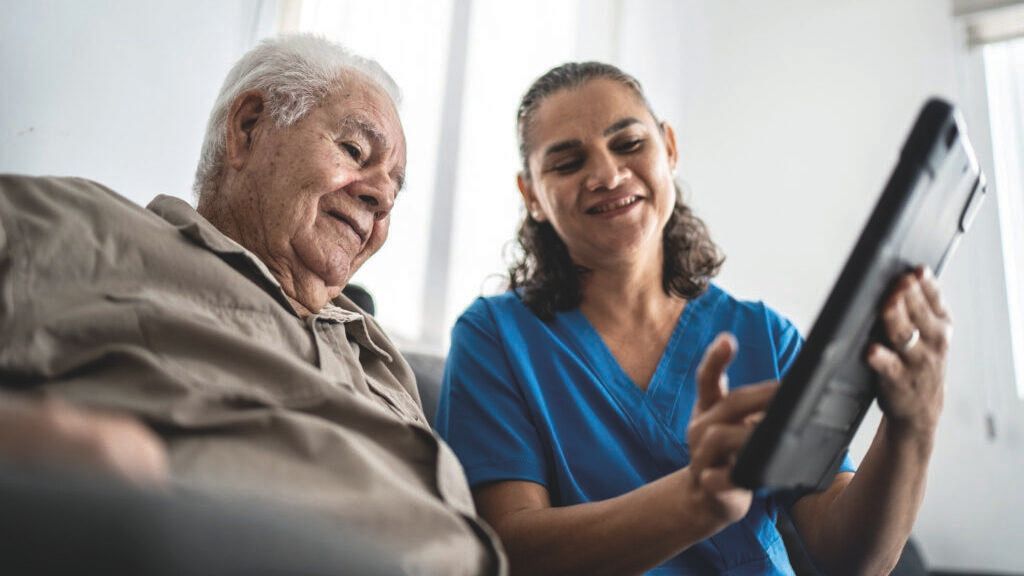How local government can embrace the technology-driven transformation of health and social care
Over the next 25 years, the number of people aged 85 and over in the UK is set to almost double. Kelly Hudson, chief strategy officer at Lilli looks at the changing shape of the population and how it will present several challenges for the health and social care sector as the growth in total life expectancy outpaces the growth in the number of years a person can expect to live in good health.

Against this backdrop, residential care homes and at-home social care continue to come under mounting pressure. Long-term waiting lists for social care assessments and care packages are soaring, while care home closures and staff shortages across the sector are adding to the strain. Now, more than ever, a sustainable long-term solution is needed to ensure that those that can lead happy and independent lives outside of residential care can access the care they need from within their own home for as long as possible. This will give care home staff the much-needed breathing space to focus their efforts, resources, and expertise on the people that need an extra level of support in their daily lives.
Local authorities have a key role to play in driving this solution. They have oversight of the entire social care ecosystem – from social care provision and care homes to domiciliary care – giving them the power to support all kinds of care professionals to do the best in their job.
A joined-up approach through technology integration
As the care landscape becomes more complex, the need for more focused collaboration between local government, housing provision, local communities, and local health and social care systems becomes increasingly urgent. Therefore, it is necessary to build a joined-up digital environment, so that data can be disseminated across health and social organisations in a more efficient and meaningful way.
The pandemic catalysed the move towards more data-driven, digital approaches, but more needs to be done to reform the sector with widespread digitisation. Accordingly, the UK government recently pledged £150 million as part of an integration drive that aims to see shared care records for all citizens by 2024.
Collected and interpreted in the right way, these digital data insights allow staff to proactively spot changes in a person’s behaviour, health, or wellbeing. For example, a recent pilot project between Lilli and Dorset Council saw discreet home-based sensors being implemented to monitor potential signs of deterioration in patients recently discharged from hospital. The sensor data alerted professionals and local service providers of changes in patterns of behaviour – such as getting up more frequently at night or using the kettle less – which could be signs of deterioration or a change in condition, enabling teams to promptly intervene before the potential problem escalated. This predictive and proactive approach enabled the Council to ultimately deliver better care outcomes, delaying entry to residential care where appropriate and reducing the number of crisis events.
Rolled out on a wider scale, projects like these could help hundreds of thousands of adults to keep living independent lives in their own homes. This strengthens all aspects of the health and social care ecosystem – it empowers teams to collaborate more efficiently, deliver better care outcomes for the people they are caring for through evidence-based decisions, prevents unnecessary complex healthcare needs or hospitalisations and ensures that care home beds are reserved for those that truly need them. But most importantly, it benefits the person at the centre of the care, giving them much greater control over their own lives and where they spend them.
Ensuring successful implementation
To realise the many benefits of new technology solutions and sharing health and care data, the right technology needs to be implemented – in the right way. This will require local government to embrace a more focused approach to tech implementation.
The array of available digital solutions out there means that selecting, commissioning, and implementing the right one is no mean feat. The first step in getting this digital transformation right from the outset is to develop a detailed understanding of the outcomes that need to be improved. Local authorities need to ask themselves some pertinent questions. What specific improvements or efficiencies need to be made? How can technology best meet these aims? Clearly defined outcomes will ultimately help to validate the success of the technology being rolled out.
Once the outcomes have been identified, local authorities should have open and honest conversations with tech providers about their requirements and what the technology can offer them. This will enable them to work collaboratively towards seamlessly adopting the right digital solution that meets the needs of the organisation and can truly support the staff on the frontline who are using the technology and delivering the care on a day-to-day basis. Extensive consultation between local government and tech providers will help to reduce the barriers to rollout, ensuring a shared understanding of the technology and the benefits it provides.
Building a digital culture
However, to fully adopt a data-driven care approach across the sector, a wider cultural shift must be put into motion. Local government should collaborate with care tech providers and health and social care leaders to play a key role in convincing staff, service users, their carers and families to have confidence in digital solutions. This will help to build a forward-thinking digital culture where technological innovation in the sector is meaningful and relevant to all.
By upskilling local authority and care staff to become digital champions, they can go on to provide the leadership required to incite and embed a culture change. This shift in mindset will help to entrench new approaches so that the wider ecosystem can be inspired by the value and meaningful realisation of technology-driven, outcomes-led health and social care.
Digital solutions should be introduced to staff and service users with a compelling narrative that brings them on their digital transformation journey. This narrative must be rooted in solid evidence and underpinned with the right training and support to boost confidence in how technology supports staff in their roles and helps them deliver better care outcomes. A key part of this involves foregrounding the value of data and the importance of having accurate information to make evidence-based decisions. It gives care staff a clear reason to use the technology, as access to reliable, real-time data gives them the tools they need to make evidence-based, well-informed decisions.
Local government can therefore relieve some of the pressure on the care sector by embracing new forms of proactive, remote monitoring technology-enabled care. As more people live longer with complex conditions and needs, the right digital solutions can help fix a system that is not built to meet current demand. With ever-increasing pressures facing the sector, this can be the answer the systems need to allow people to stay living well and safely at home for as long as possible.




